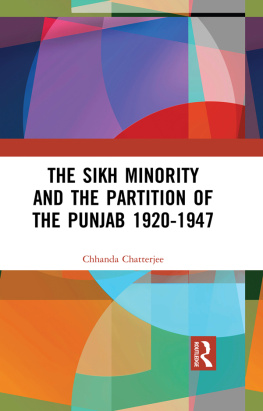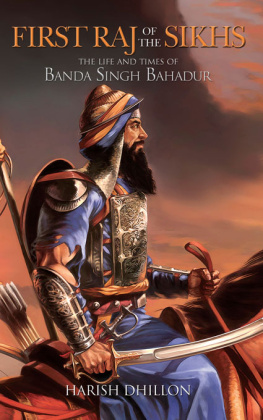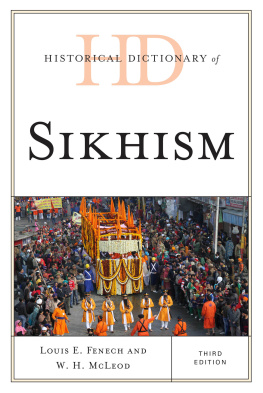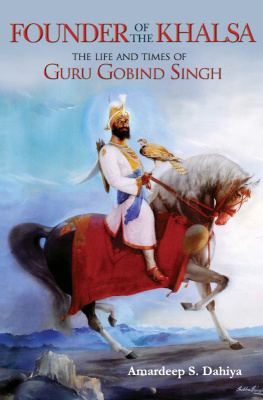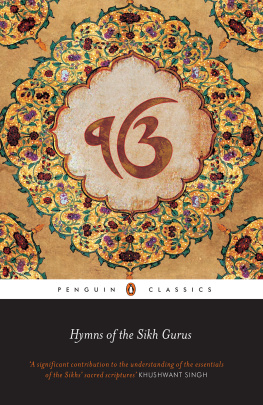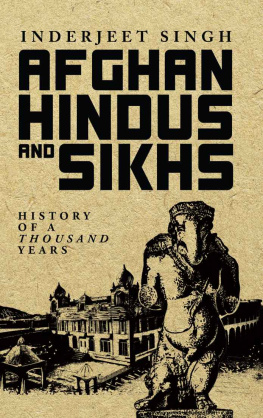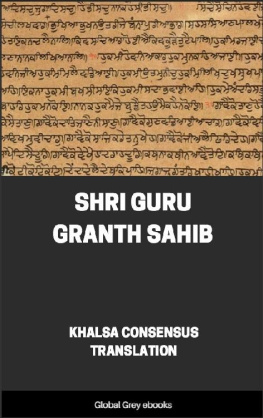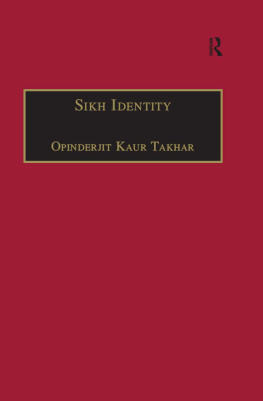First published 2019
by Routledge
2 Park Square, Milton Park, Abingdon, Oxon OX14 4RN
and by Routledge
52 Vanderbilt Avenue, New York, NY 10017
Routledge is an imprint of the Taylor & Francis Group, an informa business
2019 Chhanda Chatterjee and Manohar Publishers & Distributors
The right of Chhanda Chatterjee to be identified as author of this work has been asserted by her in accordance with sections 77 and 78 of the Copyright, Designs and Patents Act 1988.
All rights reserved. No part of this book may be reprinted or reproduced or utilised in any form or by any electronic, mechanical, or other means, now known or hereafter invented, including photocopying and recording, or in any information storage or retrieval system, without permission in writing from the publishers.
Trademark notice: Product or corporate names may be trademarks or registered trademarks, and are used only for identification and explanation without intent to infringe.
Print edition not for sale in South Asia (India, Sri Lanka, Nepal, Bangladesh, Pakistan or Bhutan)
British Library Cataloguing in Publication Data
A catalogue record for this book is available from the British Library
Library of Congress Cataloging in Publication Data
A catalog record for this book has been requested
ISBN: 9780367110901 (hbk)
ISBN: 9780429024795 (ebk)
Typeset in ITC Galliard Std 10/12
by Manohar, New Delhi 110 002


THIS WORK WAS started long ago when I visited Cambridge with a scholarship from the University of Cambridge in 1994. I came in touch with Dr. Lionel Carter in the Centre for South Asian Studies in Cambridge and he showed me some private papers of officers, who had served in the Punjab districts, which gave me some insight into the militancy of the Sikhs on the eve of the partition of Punjab. Later I went to work in the India Office Library with a Foreign Travel Grant from the ICHR and Mr. Bingley introduced me to the papers related to partition. The long drawn out work of data collection in the Nehru Memorial Museum & Library, the National Archives of India, Bhai Vir Singh Sahitya Sadan all located in New Delhi took me a long time. The Vice-Chancellors unassigned grant from Visva-Bharati made it possible to visit New Delhi every year from 1997 to 2002 and continue the work. But the secondary literature related to this work was also quite vast and I had to visit Bhai Kahan Singh Nabha Library in Patiala to get hold of some books. I continued to share my findings with experts on Punjab politics like Dr. Kirpal Singh, Dr. Mohinder Singh and Prof. K.L.Tuteja in the various sessions of the Indian History Congress. Professor Ian Talbot of Coventry University, UK very kindly sent me some of the chapters from one of his books even before the book was published. Discussions with Prof. Preetam Singh of Oxford Brookes University were also very fruitful. Sharing the memories of the partition with some refugee Sikh intellectuals like Sardar Saran Singh, editor, Sikh Review and Manohar Singh Batra, former Deputy Director General, All India Radio, also gave me an insight into the mood of the times. Prof. Indu Banga of Panjab University, Chandigarh helped me with some of her own findings and corrected me at every stage of my work. However, my greatest debt is to Late Prof. Parthasarathi Gupta, who virtually rescued me from the impossible goal of working on three provinces of Punjab, Awadh and the Central Provinces simultaneously. I can never forget Prof. Guptas numerous labours of love for my understanding and progress. I wish I could present him with the fruit of his affection for me, but now I can only cherish his memory in gratitude.
I must also thank Mrs. Jaya Ravindran and Mr. Prabir Roy of the National Archives of India, New Delhi, Mrs. Alka Bali of Bhai Vir Singh Sahitya Sadan, New Delhi, Dr. Jyotsna Arora and Noor Aziz of ICHR Library, the numerous staff of the Nehru Memorial Museum & Library, New Delhi, India International Centre Library, New Delhi, Bhai Kahan Singh Nabha Library, Punjabi University, Patiala, Centre for Studies in Social Sciences, Kolkata, West Bengal State Archives, Kolkata and Central Library, Visva-Bharati for their sincere help at every stage of my work. I had applied to the ICHR in 2006 for a Project Grant to complete my work. An inordinate delay in releasing the Grant till 2009 created some difficulties. My responsibilities in Visva-Bharati first as Head of the Department of History and then as Director, Centre for Guru Nanak Dev Studies came in the way of completing the manuscript. Prof. Y. Sudershan Rao, the present Chairman, ICHR, very kindly allowed me to complete the Project which was long overdue. Dr. Rajesh Kumar, Deputy Director (Research) in the ICHR was also very helpful at various stages of the work. My thanks are also due to Mr. Ramesh Jain of Manohar for accepting the manuscript for publication.
My family members, my daughter Anupurba Roy and my husband Arun Roy, were extremely cooperative and patient throughout the long period of presenting papers on the subject away from home in Punjab and Delhi. My daughter helped me with the final version of the manuscript even after she had left for her studies in the UK. My colleagues in Visva-Bharati had always been very kind and helpful. It will be sheer ingratitude if I forget to mention my husbands secretary, Mr. Sreedharan Nair, who helped me with the printing, binding and finalizing the manuscript. In spite of all their kindness my failings remain.
C HHANDA C HATTERJEE
Director
Centre for Guru Nanak Dev Studies
Visva-Bharati, Santiniketan
Contents
Guide
Chapter 7
The Punjab Elections of 19451946 and its Aftermath
ELECTIONS IN THE Punjab were being held in spite of the worst premonitions of the Governor Sir Bertrand Glancy. He was apprehensive that it would tear the entire fabric of Punjabi society apart and pull all the three communities asunder from each other. It was thus the Pakistan question around which the elections in the Punjab revolved.
1946 Elections and the Sikhs
The Sikhs were not slow to comprehend the implications of the elections announced by the Viceroy for the cold weather of 19456. The end of the War meant demobilization and unemployment for the Sikh fighting men. The timing of the elections was not very opportune for their community. For them the elections at this juncture appeared to be an attempt by the British government to thrust Pakistan down the throats of the Sikhs. The carving out of Pakistan in the Punjab meant the subjugation of their homeland and a challenge to their unfettered existence.
The Sikh Panth will resist Pakistan to the last man, declared Sardar Ishar Singh Majhail while unfurling the Nishan Sahib (the Sikh flag) in Ranjit Nagar in Gujranwala on 29 September 1945 at an Akali Conference attended by over a lakh of men and women. The Conference was conducted with great pagaeantry, the Presidentelect
It was decided that all the Sikh candidates would fight only on the Panthic ticket. The veteran Akali leader Master Tara Singh was entrusted with the task of a Sikh Election Board in consultation with all the important groups in the community. The issue involved in the coming elections was so vital that it was desirable that the Panth should speak in a single voice. With all their readiness to cooperate with the Congress and to participate in all their programmes in the service of the country, the Akalis tried to break away from toeing the Congress line in its entirety. Sardar Ujjal Singh spoke of the Congress insensitivity to the problems the Sikhs had been anticipating for themselves in the proposed Pakistan. In spite of their 1929 assurance to the Sikhs not to reach any settlement without their consent, they had ignored Sikh interests during the Round Table Conference. Master Tara Singh revealed before the audience how the Congress had already committed itself to the principle of Pakistan. Sikh voters were exhorted to rally round the Panthic flag, which was the emblem of sacrifice and freedom. Drawing on a slogan raised by Master Tara Singh, the Conference decided on a manifesto Panth Azad, Mulk Azad which meant that the liberation of the land was inextricably associated with the question of the independence of the Sikh community.

